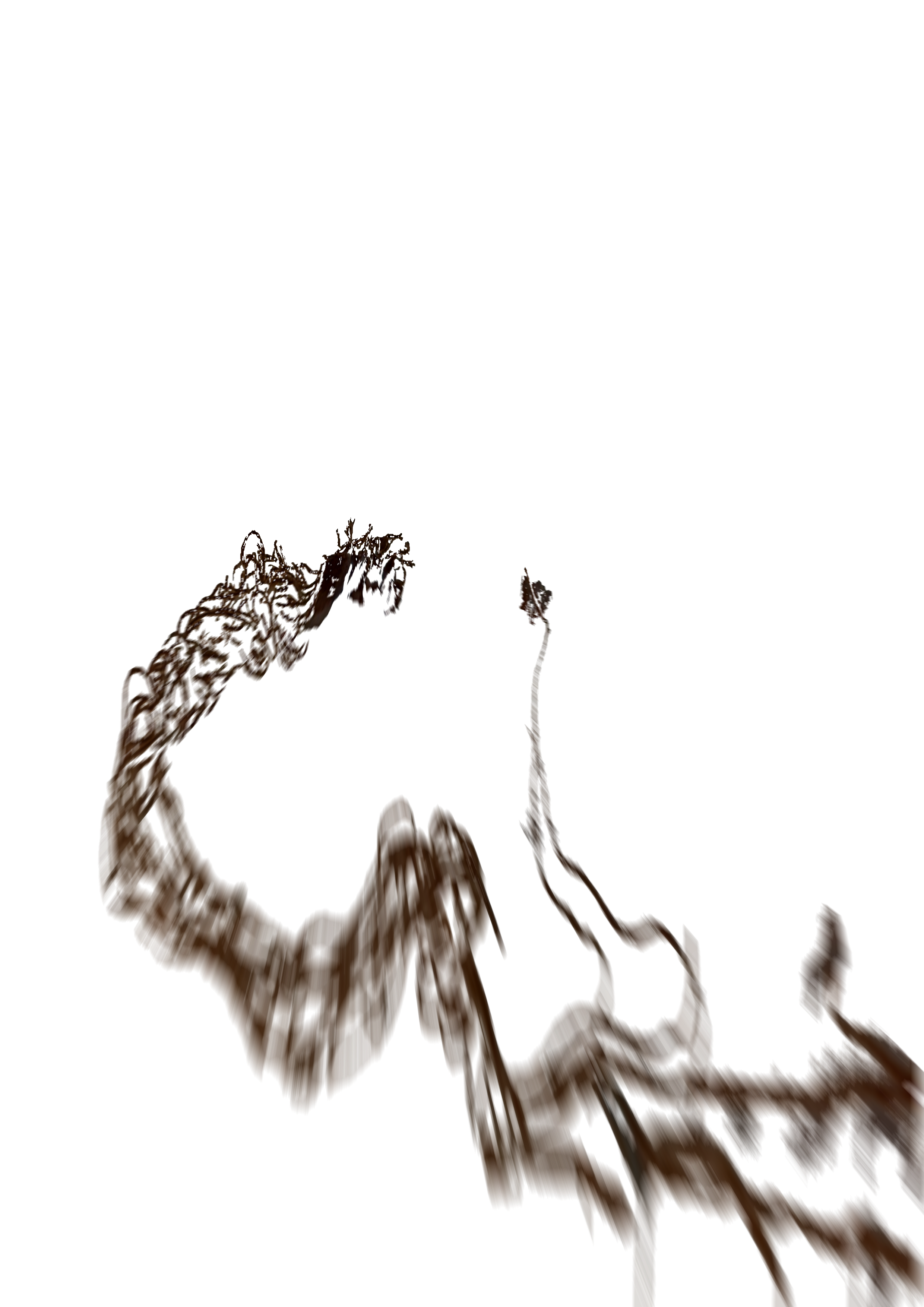Here you can see the beginnings of a collection of objects that manipulate reality; the two currently in my possession were sourced from the same location but I am in the process of developing a system which I hope will aid in uncovering more objects of this nature. I have come to believe these reality-altering qualities may occupy the most commonplace of objects, which has made the search quite challenging; although, of course, you might argue the opposite.
For your benefit, I have documented the objects and their qualities as you would experience them were you to find them, as I have.
Standing in the entryway, the light from outside draws your silhouette lying flat in the centre of the tomb. Stepping down, you enter. There are two unoccupied cavities to your left, three in front of you, and four to your right. On the unlevelled ground lie the remains of a process of measuring. Twenty-seven lengths of string have been cut and labelled with masking tape. It is folded and adhered to itself to encase the ends of each string, offering pencilled codes of reference, now dirtied by the encroaching dust of the tomb. Each strand is the transposed height, width, or depth of one of the hollowed cavities. In the moment of measuring the string was drawn taut, surface to surface, before being cut and abandoned to collapse upon itself; dimensions collapse; cavities collapse.
A phantom chaos emanates from the seemingly innocently discarded strings. The strands became anchors upholding the measured space. In their disordered entanglement, as they lie before you, each wall of the cavity is unceremoniously torn from its rigid structure and takes form with the twists and tangles of thread, uncomfortably occupying foreign qualities; structure becomes not fluid, but rather broken and jagged, in resistance to its manipulation. Something like a paper-built room, folded along creases creating an unintelligible mass of intersecting facets that used to be walls.
The presence of your body occupying the tomb interferes with the measurements attempts at destruction and deformation. Picking up the string you can feel its attempts to warp the walls around your movements. You contemplate the consequences of your subsequent actions: If you take it with you, will the walls come? If so, what remains?
Stumbling between opposing realities of the tomb, that have been constructed and deconstructed by the manipulation of these dimensions in your hands, unease writhes in the twists of your gut. Sitting on the stone floor of the tomb you begin to detangle the threads, attempting to re-separate the dimensions in order to regain some conceivable form of a logically structured space. Laying each strand on the ground you consult the labels to decipher their code. You follow as best you can their allusions to the authentic structure to which you hope to restore the tomb. What you are unaware of, but I have since come to realise, is that there is no authentic structure, you may be able to achieve a result which satisfies you, dissolving the discomfort in your stomach, but this will be nothing more than a convenient convention.
You make the firm decision to leave the tomb, strings in hand. In doing so, you create an irreparable break between the dimensions contained within the string and the subject they reference. In doing so, you are removing the upholding dimensions, resulting in a total separation between the tomb and its structural qualities. Only traces, as a ghost of a space, are left behind as you exit. Your silhouette follows, as the last thing that could ever conceivably leave what is no longer a real space.

In this case, I came across two iterations of the object, one held the reality-altering qualities I mentioned, the other did not.
First I’d like to introduce the physical object, before disclosing its effects. This will allow you to approach the functioning specimens with some level of familiarity which should reduce the shock of the experience. Some of the tiles have been inaccurately translated and the loss of data has resulted in defunct keys. The tile appears glossy but is in fact encased by a fine and delicately moulded amnia. It appears still but when you skim its surface with your index finger you will feel its current. The fluid travels across the surface, imperceptible to the eye but the highly sensitive nerves in the finger are just able to perceive its movement. This carries the transmissions across its surface, across craters, divets, and rivulets. Though the amnia is not broken, it contains informational flaws within it. Thus this defunct tile transmits nowhere, its circuit has been broken by the loss of data. No longer an accurate facsimile it has no anchor point with which to correspond.
This key was a success. Data transmission was accurate, resulting in a fully intact and functioning facsimile. This time, you will once again gently touch the key (that is the tile) with your index finger. Before you can register the surface flow you now know to be present you experience the true effects of the key. Though you may simply graze it with a single finger tip you will very suddenly experience a sensation incongruous to the action carried out. It does tend to shock people but fear not, though it may seem unnatural it is without pain. You will experience a shooting stretching of your body, starting with the primary finger tip (initial point of contact) and spreading exponentially through your extremities. I’m describing it for you so you know what to expect and can understand what’s happening, but in all likelihood this sensation will occur so quickly you will not be able to monitor this yourself. It begins, as I said, in the finger tip. It then stretches from the point of the first knuckle, then the next, and so on. You will feel your finger extend to unfathomable lengths. You may notice that you have lost control over the relevant digit but rest assured it will be restored. Once this has occurred it carries through to the hand and then the arm. Your arm will extend through the key. You won’t lose sight of any of these body parts so you don’t have to worry about losing them, they simply extend beyond their default limits, aided by the key to the anchor. The corresponding anchor for this tile resides in the Tomb of Kings in Paphos, Cyprus. Specifically Tomb 1, Cavity 3.
Once your fingers have surpassed the portal phase they will extend back out into a tangible state. Your arm will remain in-between but you will become mostly unaware of the sensation once your hand has reached through. Most report simply feeling as if their arm is stretched out in water, or those who have experienced it, a sensory deprivation tank. It can be mildly disconcerting when your body parts occupy different states as your hand will perceive physical stimulus once it has reached through. Your sensory perception will be limited to touch but this sense will be elevated once isolated. The keys do not operate within linear time so you are able to perceive the topology of the cavity across all of its states simultaneously. This can be overwhelming, but don’t be alarmed. The key is not to try to pin down one particular moment, this goes against it’s nature. It has been observed to be quite a pleasant experience if fully succumbed to, with lasting mental effects. Experiencing physical matter in this manner can positively alter ones perspective; it engages a dormant zone in the parietal lobe which can continue to function after the fact. As such, participants are able to apply this experience to more general practices of perception in their daily lives, allowing them to approach all types of stimulus more holistically.




A wheel that turns, returns, and turns again.
An endlessly recreating, re-enacting memory mechanism. A rotating eternity. Self-generating and self-altering.
reach down into the deep immemorial strata that contain the latent collective energy of the past
a dredging machine descending down through the leather waters of the contemporary world into the sand, silt and sludge of the sedimented past.
fragments from 'Memory Theatre' by Simon Critchley (2014) p.66/7